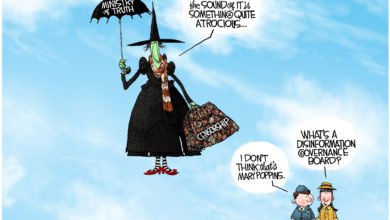Medal of Honor Monday: Air Force Chief Master Sgt. Richard Etchberger
Many military men and women do heroic things that they can’t get credit for because they’re involved in classified missions. For Air Force Chief Master Sgt. Richard Loy Etchberger, he finally did get credit in the form of the Medal of Honor 42 years after he lost his life saving others during the Vietnam War.
Etchberger was born March 5, 1933, in Hamburg, Pennsylvania, to Donald and Kathryn Etchberger. He had an older brother named Robert.
When their father lost his job after the Pearl Harbor attacks, both boys started to work odd jobs to help with finances. Eventually, the family moved to nearby Minersville, Pennsylvania, so his dad could find more work. There, Etchberger became a star basketball player and excelled in academics. His brother said it helped that he had a photographic memory.
“When he would go upstairs to study, he would be done in 10 minutes. Then, he was back downstairs doing whatever he wanted. That used to infuriate me because I couldn’t learn my lessons that quickly,” Robert Etchberger said in an interview for an article on the Airmen Memorial Museum website.
After World War II ended, the family moved back to Hamburg, where Etchberger finished high school. He was the senior class president by the time he graduated in 1951.
A few weeks later, Etchberger enlisted in the Air Force. He initially wanted to be a pilot, his brother said, but due to an injury that lingered from his basketball days, he washed out of aviation school. Instead, he was trained as a radio operator and came to be known to be an electronics whiz.
A few years into his service, Etchberger met Catherine Vaccaria while on assignment in Utah. The pair married in 1956, with Etchberger taking on the role of stepfather to Catherine’s son, Steve. By 1959, they had two more sons, Richard and Cory.
In August 1965, Etchberger and the whole family were transferred to Clark Air Base in the Philippines. Aside from his standard duties there, Etchberger was also the communications and electronics noncommissioned officer in charge of a radar control post on Hon Tree Island in Vietnam, where the U.S. was now at war.
After a brief stint back in the U.S., Etchberger was assigned to the 1043rd Radar Evaluation Squadron and placed on a top-secret Air Force/CIA mission code-named Project Heavy Green. It called for Etchberger and a small team to go to a small radar station on top of a remote mountain in Laos that was being used to direct U.S. air support to North Vietnam during the early years of the war.
The mission wasn’t easy to join. Etchberger and the other airmen involved needed to be released from the Air Force and hired by Lockheed Corporation to avoid giving the perception that Laos was involved with the U.S. government in the war. When the mission was over, the airmen would be welcomed back into the Air Force.
In early 1968, Etchberger and his team made it to the radar station, which was called Lima Site 85. From that mountainous jungle perch, which was only 12 miles from North Vietnam, about 40 airmen controlled hundreds of air strikes into enemy territory during the 1968 Rolling Thunder campaign.
The North Vietnamese knew the value of the site, so they made many attempts to take it out. None were successful until March 10, 1968, when they began to attack the site with heavy artillery. By nightfall, Etchberger and his off-duty team realized their sleeping quarters were vulnerable to the shelling, so they hid with their guns and survival radios on a ledge partially protected by a rocky overhang for the rest of the night.
Early the next morning, enemy commandos scaled the cliff the compound was on, killing 11 of the 19 Americans working at the site. While Etchberger’s team was initially spared, it didn’t take long for the enemy to find them and start attacking, killing two airmen and seriously injuring two others.
Since Etchberger was a radar technician, he didn’t have any formal combat training. But that didn’t stop him from picking up arms and defending their position. For hours, Etchberger single-handedly held off the enemy with an M-16 rifle, all while calling for air rescue and directing air strikes that were practically right on top of him.
Once rescuers arrived, Etchberger risked his own life several times, running through heavy fire to put three of his wounded comrades into rescue slings hanging from the hovering rescue helicopter. But when he finally climbed into the sling himself and was lifted to the chopper, he was hit by a burst of gunfire. Etchberger survived the initial helicopter flight, but he died before he could be transported for further medical treatment.
Etchberger, who had turned 35 the week prior, gave his own life to save the lives of his remaining crew. Of the 19 men on the mountain that night, only seven made it out alive — three of them thanks to Etchberger’s actions.
The slain airman’s body was returned to the U.S. and buried in St. Johns Cemetery in his hometown.
Since details of the mission were classified, Etchberger was secretly awarded the Air Force Cross. Nine months after the mission, his wife, who accepted the honor on his behalf, was told the real story of what happened to her husband; however, she was sworn to secrecy. Etchberger’s sons didn’t even learn the truth until the late 1980’s when the details were finally declassified.
Once his actions were no longer a secret, they remained relatively hidden in the past until the early 2000’s. That’s when Air Force Master Sgt. Robert Dilley read about Etchberger’s heroism and thought more should be done to honor him. Dilley wrote his local congressman, and, together, they began a years-long movement to have Etchberger recognized with the Medal of Honor.
That dream came to fruition on Sept. 21, 2010, when Etchberger’s sons received the nation’s highest medal for valor in their father’s name from President Barack Obama during a White House ceremony.
Etchberger’s wife, Catherine, was also recognized for her own personal sacrifice in keeping the secret — something she never told anyone, even upon her death in 1994.
“She kept that promise, to her husband and her country, all those years, not even telling her own sons,” Obama said. “So, today is also a tribute to Catherine Etchberger and a reminder of the extraordinary sacrifices that our military spouses make on behalf of our nation.”
Etchberger’s actions continue to be honored in the military today. Various Air Force bases have renamed streets and buildings for him, including Barksdale Air Force Base, which also displays his name etched in a granite monument. Etchberger’s family donated his chief’s uniform and various other items to a display honoring him at the Air Force Senior NCO Academy at Maxwell Air Force Base, Alabama.
This article is part of a weekly series called “Medal of Honor Monday,” in which we highlight one of the more than 3,500 Medal of Honor recipients who have earned the U.S. military’s highest medal for valor.
Source: Department of Defense
Content created by Conservative Daily News is available for re-publication without charge under the Creative Commons license. Visit our syndication page for details.




